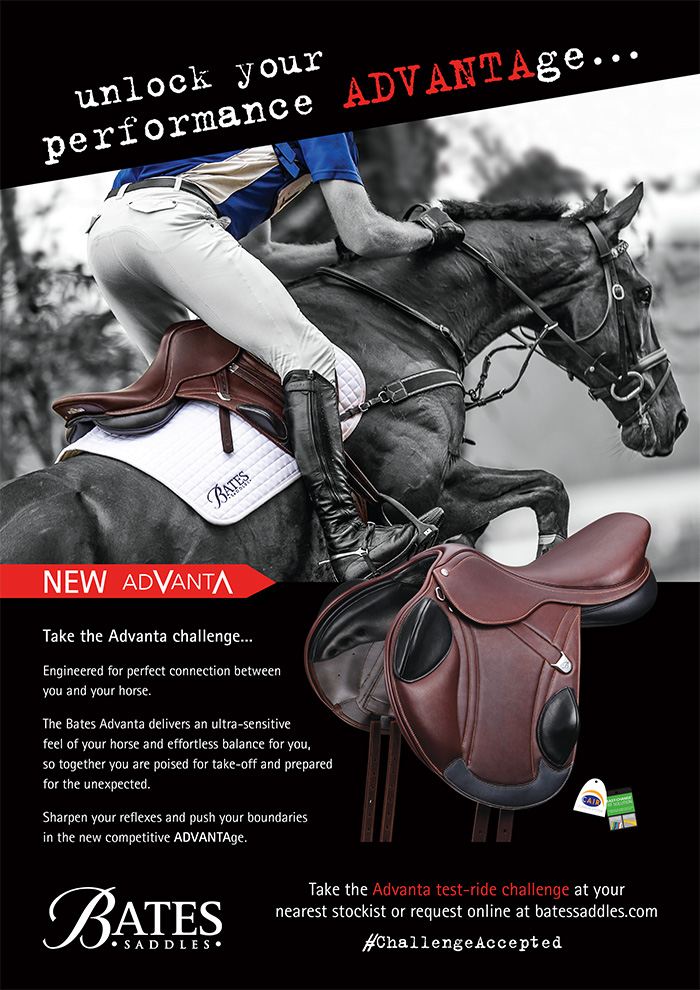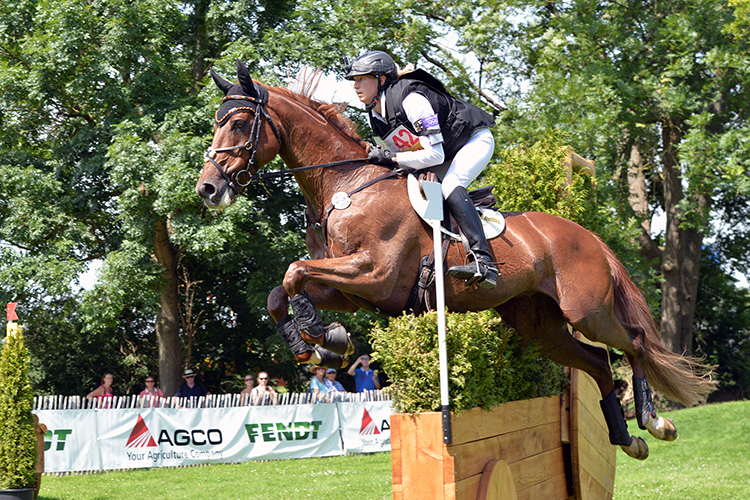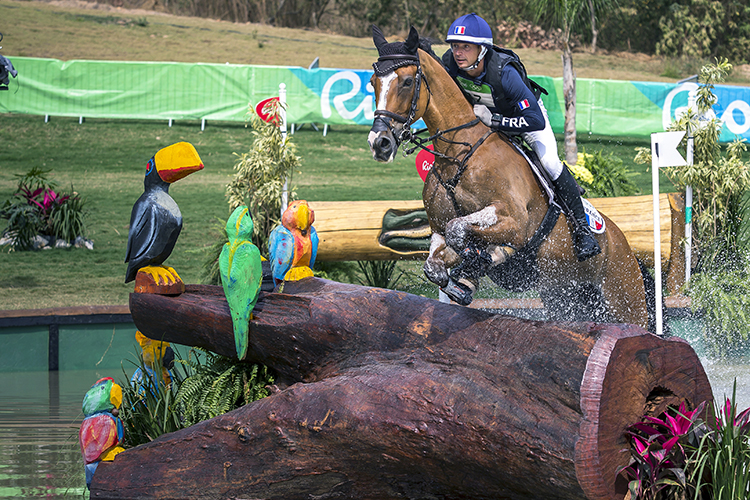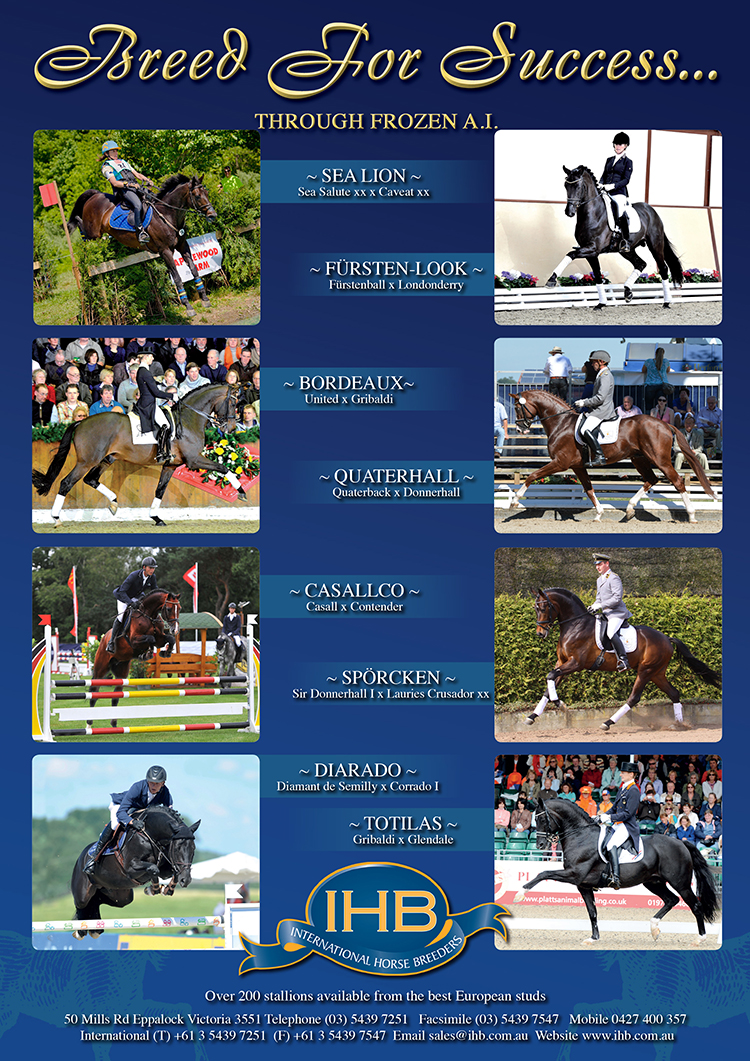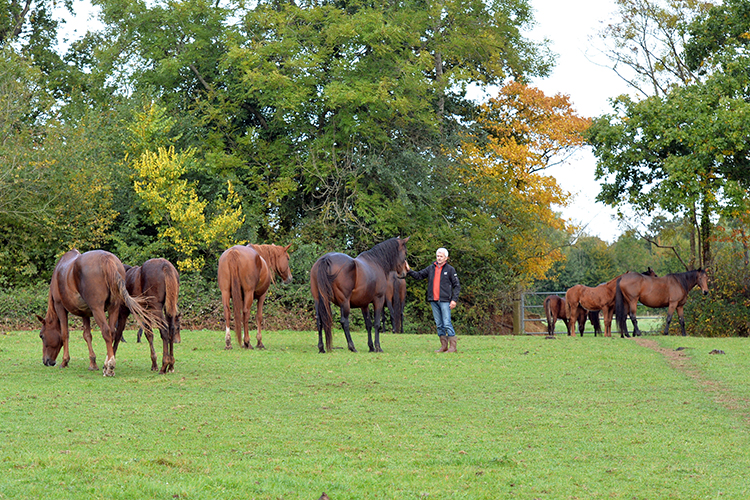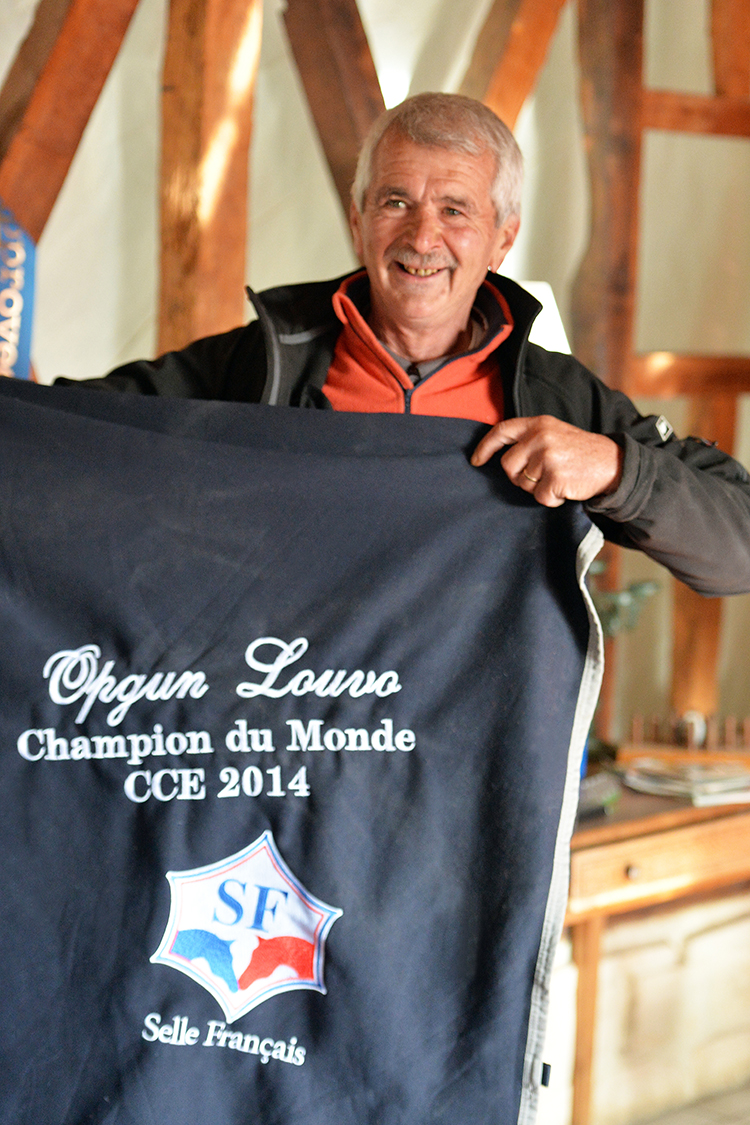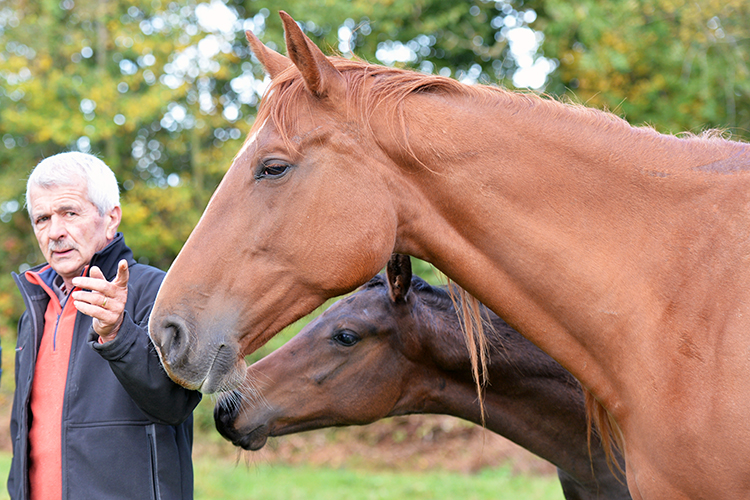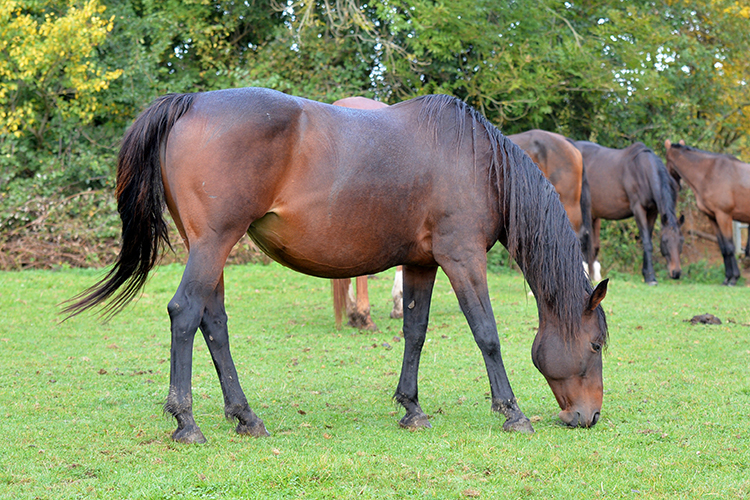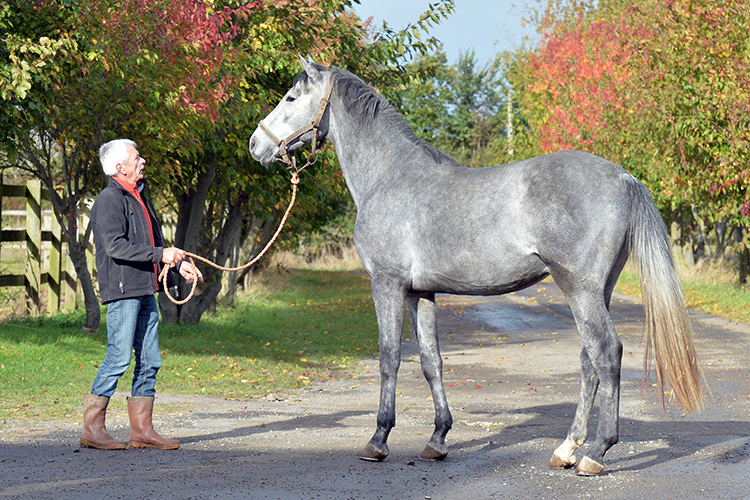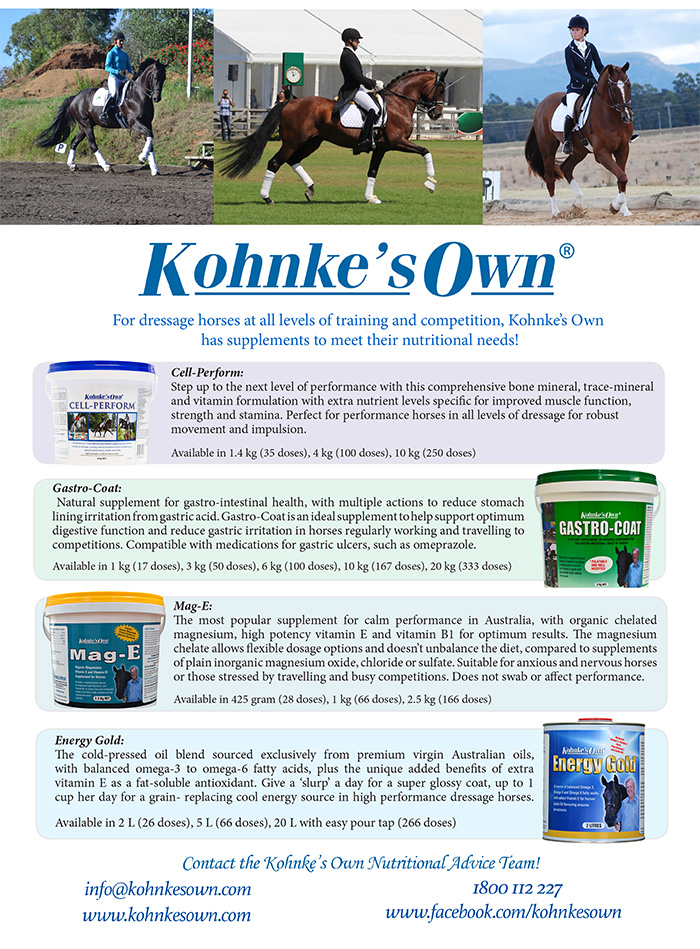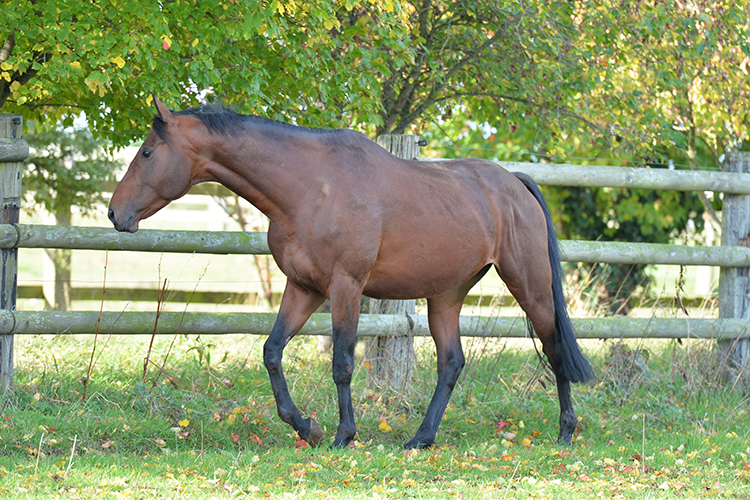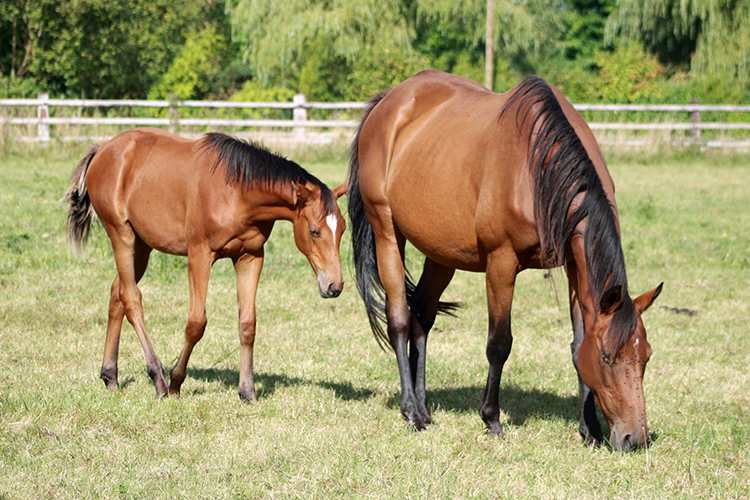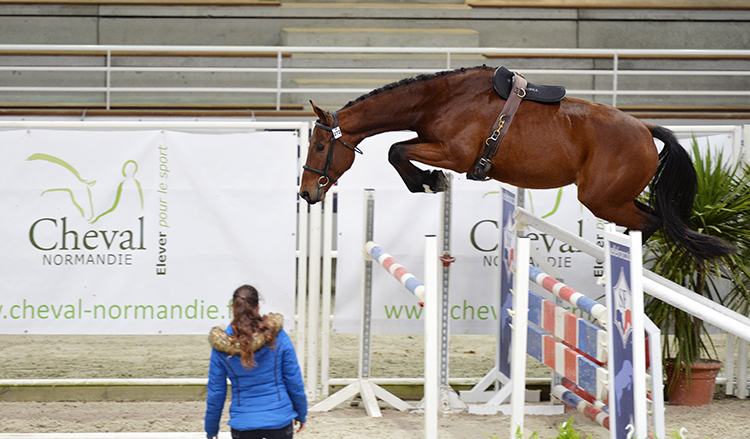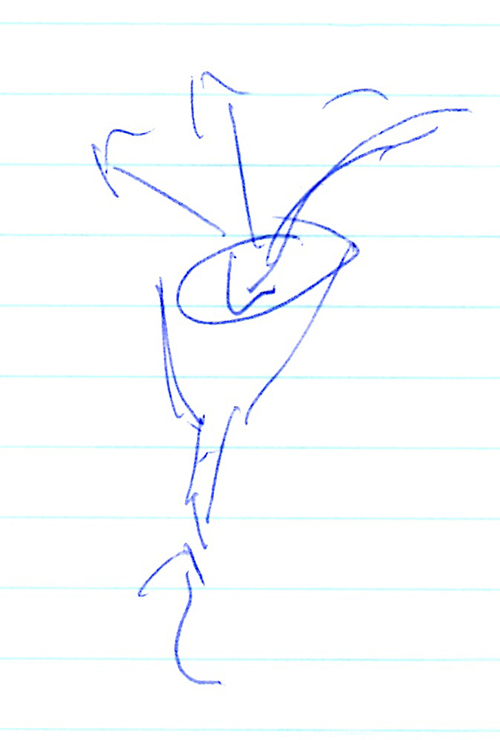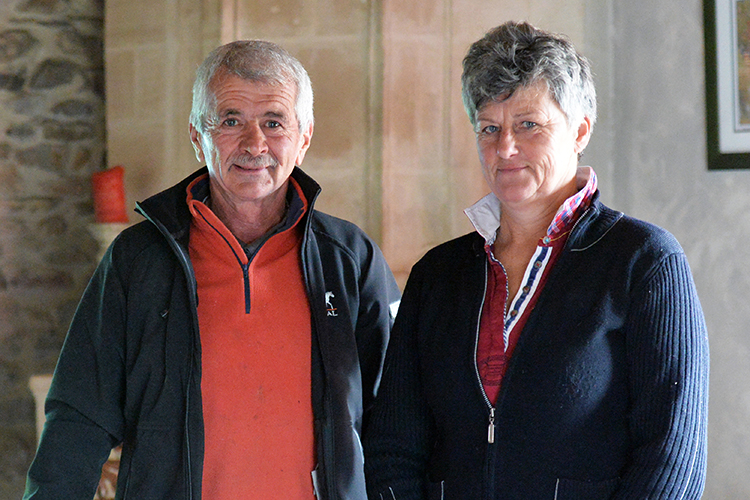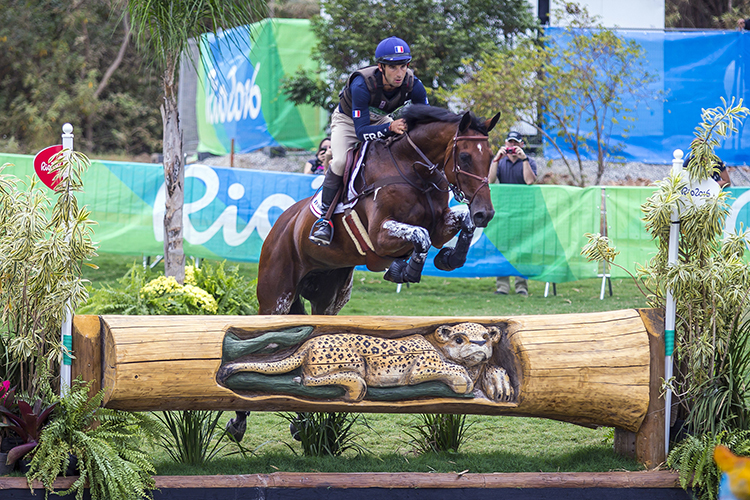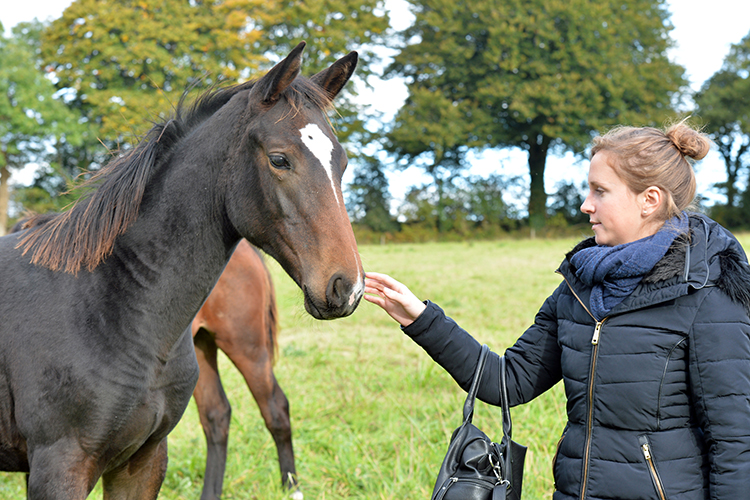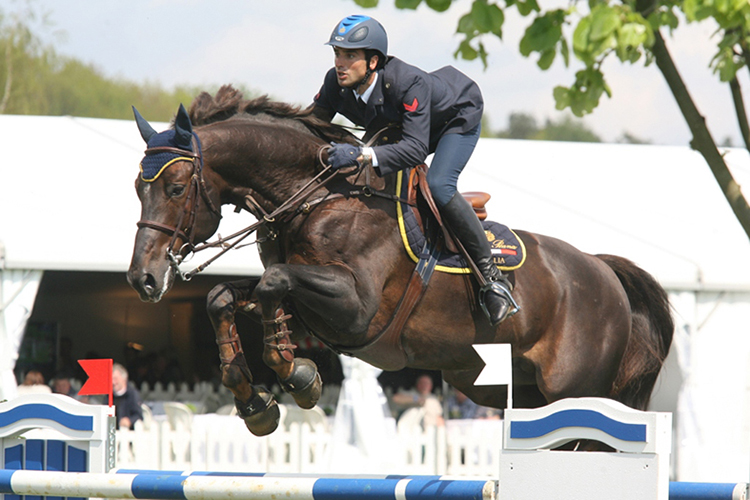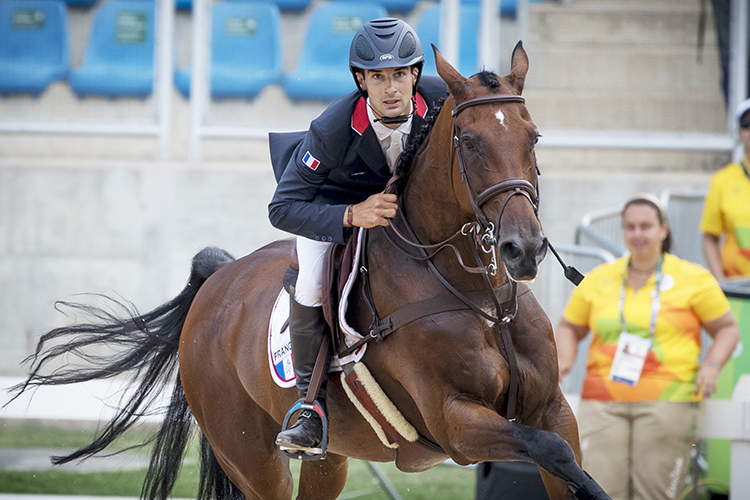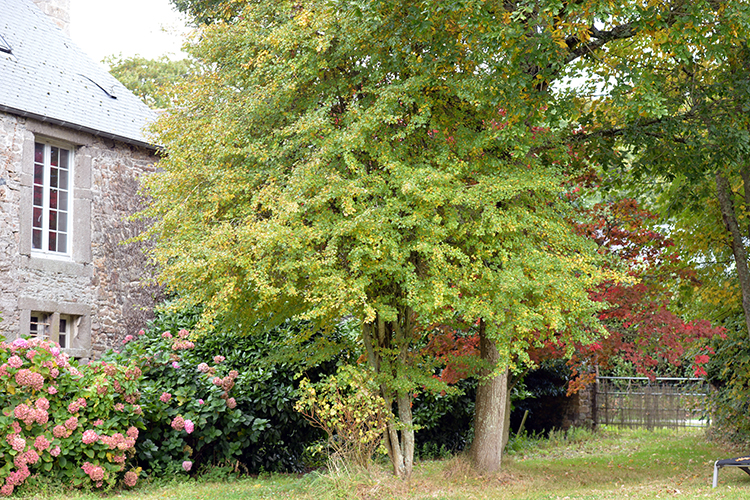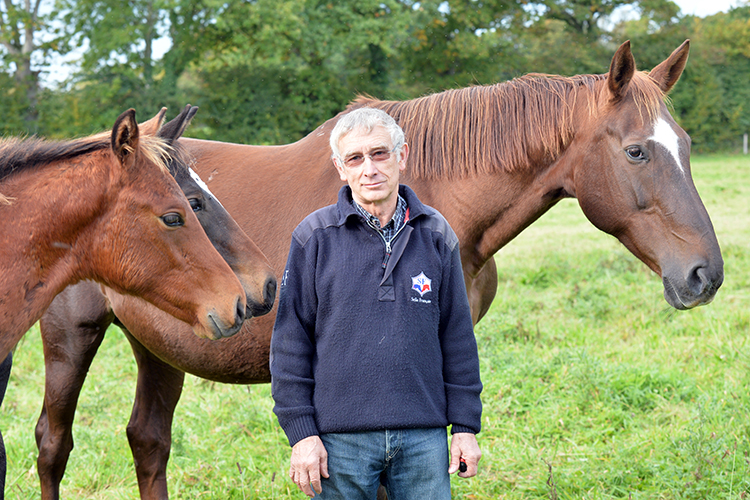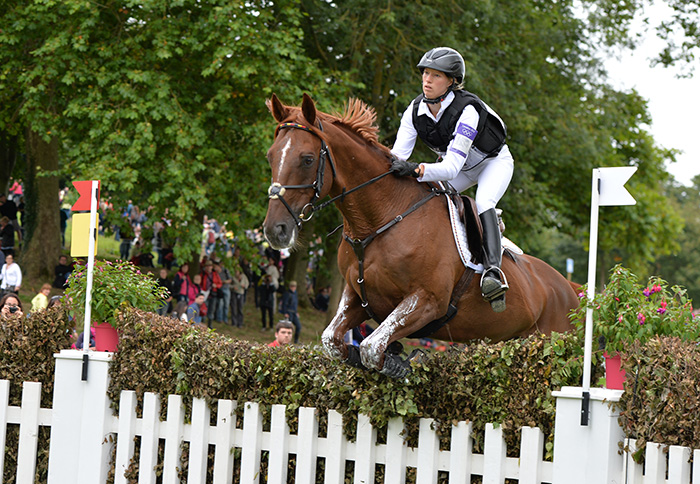
Christopher Hector goes looking for answers – pic is World Champion for Germany in 2014 at the Normandy WEG, Opgun Louvo
Roz Neave, Rebecca Ashton, Eric Knoll and Dirk Caremans took the photos
The French Eventing Team won the Gold Medal in Rio in spectacular style. A tough, coordinated team effort that kept pushing right to the line, right to the showjumping where they snatched a gold medal, and their number one rider, Astier Nicolas took home silver on Piaf de B’Neville. How has the French team ridden to the top? Our horses, is usually, the reply, our French horses are so good… and there are also so many of them.
Last year, the number of saddle horse foals born came to just on 16,000: French blood counted for 13,780 (down from 18,000 in 2011) and foreign blood for another 2094. It means that even though the Sport Horse business is in something of a decline, as it is world-wide, in France it is still a major industry.
There are two million riders in France, of whom 700,000 are registered with the French Equestrian Federation. With 8,600 clubs, horse riding is the number one employer in the sports world: 38,000 managers, managers’ wives, husbands and salaried workers. On the competition side, there are for FFE and FEI events, 2,500 organizers, 160,000 competitors and 15,000 competition days.
The equestrian industry in France is large enough to support its own semi-government organization, UNIC, whose charter is to market the French horse throughout the world. This article would not have been possible without the assistance provided by UNIC.
(article continues below)
Sandra Auffarth and Opgun Louvo
The French Breeding Industry has taken note that their eventers are in demand all over the world, indeed half the German team at Rio, was sitting on Selle Français horses, including Sandra Auffarth, and her world champion, Opgun Louvo.
“Opgun Louvo was the first French horse I rode.”
Was he very different?
“No, I got him when he was very young, so I started with him, and everything was good. A woman from Belgium went to France and bought him when he was three years old, and when he was five, she rang me and asked if I would like to ride him because it is a small horse and I am not that tall. I tried him and I liked him.”
On their way to gold in Rio – Qing du Briot and Thibaut Vallette. The horse is the real French eventing melange – he is by Eolien II who combines the blood of Grand Veneur and Furioso, and is out of a Selle Français branded mare who is 7/8ths Anglo Arab…
Did he feel as special as what he became when you started with him?
“At first he was just a nice, sweet horse, nothing totally special, but he jumped very good. I liked the way he jumped from the start, and I thought, it is fun to go on with, so I did.”
Since then you have had more French horses?
“I have another mare, by Parco out of a Diamant de Sémilly mare, and the one I brought to Lion d’Angers, Viamant du Matz (Diamant de Sémilly / Voltigeur le Malin).” (article continues below)
Yves Berlioz – this is the birthplace of Opgun Louvo…
Are you now a French horse fan?
“Of course I am a little bit a fan because my Opgun is a French horse, so I have to be. I like the jumping bloodlines, with quite a lot of Thoroughbred, mixed with Anglo-Arab – it’s very interesting.”
Opgun Louvo is by Shogun II who is by the Thoroughbred, Night & Day out of an Anglo-Arab mare by Garitchou. Opgun is out of a mare by the Selle Français J’T’Adore, a grandson of the great Thoroughbred, Furioso, out of an Anglo mare, by the stallion, Pancho by the great Nithard. All that adds up to 75% ‘blood’ by which we mean Thoroughbred or Arab blood.
Yves and Opgun’s sister – what a mare!
The World Champion has said it’s interesting, so let’s go and find the man who bred the chestnut eventing machine, Yves Berlioz at his stud farm, the Haras des Louveaux.
One of the delightful things about writing about breeding, is the breeders themselves, the real breeders, the ones who think outside the square, tend to be passionate, and, well, slightly eccentric.
The welcome was warm from both Yves, and his wife, Elisabeth, who is a member of the famous Brohier horse breeding family. As I was soon to learn, you need pedigrees for the breeders as well as their horses, since the family ties are strong and complex.
We are lucky, the mares have been brought up to a paddock close by, for the benefit of some German visitors later in the day. It’s a magnificent group of mares, mares that are so well proportioned, that it is only when you get up close to them, that you realise just how tall they are. One of the biggest, and classiest, is Opgun’s full-sister, and of course, therein lies a tale…
Yves purchased the Opgun’s dam, Vanille du Tertre for €500, she was a horse no-one wanted, except Yves: “She was beautiful, and her bloodlines were good. She had a beautiful face, and I fell in love with her…”
Quick Louvo, out of Vanille du Tertre and by Quick Star
“My family had nothing to do with horses, but I was a rider of young horses, and my wife’s family are in horses. She is the daughter of Mr Jean Brohier, the breeder of many horses, including Narcos II. His father, Alfred Brohier, was another famous breeder. I stopped riding because of back problems, and we started our stud in 1989 with not very expensive mares, but mares with a lot of blood.”
Were you always trying to breed eventers?
“My breeding program involves a lot of blood, so naturally our breeding is directed towards eventing.”
Yves and his young stallion, Dingo Louvo by Ugano Sitte out of a Thoroughbred mare. Licensed in Zangersheide
Why did you want this blood when everyone else in France was moving away from the Thoroughbred?
“You need a certain percentage of blood to have good horses, blood brings speed, intelligence, there are lots of qualities that come with blood. I don’t need to breed big horses, especially with today’s courses that are very technical. Modern courses are very good with my sort of horse.”
You are always looking for the right mix of Thoroughbred, Anglo-Arab and Selle Français….
“It is difficult, it takes a lot of research – I have a maxim, diversity, and blood proximity.”
And now you are introducing the blood from Holstein with Ugano Sitte…
“This is what I mean about diversity, I want new blood from new breeds.”
What will the Holsteiner bring?
“The stallion was born in Belgium, but the sire’s blood is from Holstein. The Holsteiner can offer a style and good locomotion. The minus is that they don’t have the good temperament of the Selle Français. It is a mélange we are looking for.”
Ugano Sitte is by the famous Clinton, who is straight Holsteiner but his dam, Ialta Sitte, is a right mélange all of her own. Dutch on the top line, she is by Avontuur, a son of Hugo Simon’s Little One (Jasper), she is out of Insel Sitte by the Selle Français stallion, Major de la Cour, out of the famous Hanoverian mare, Gute Sitte (by Grande). Gute Sitte was a bronze medalist at the Montreal Games with Eric Wouters.
“We have to introduce the Holstein, but not too much, we must keep the characteristics of our French horses.” (article continues below)
Alcatraz’Jac – the ex-steeplechaser is now a breeding stallion
Where did you find your Thoroughbred jumping stallion, Alcatraz’Jac?
“When I bought the mare, Tip Top’Jac, the breeder told me he also had a stallion, a out of the same mare as Tip Top, but he was racing. When the stallion was injured, he rang me and said to go and buy him. He was a steeplechaser, but he was injured early in his career. He has been with me two years.”
Tip Top and her Anglo-Arab foal
Has the market for eventing horses grown?
“The international market has grown a lot, our horses are very intelligent and the international demand is very strong.”
It is interesting that you have made your own Anglo-Arab stallion, by a Thoroughbred out of a pure Arab – is this because there are no Anglo-Arab stallions left?
“I will breed with that colt, there is a lot of blood in that horse and he will add strength.”
Drouot Louvo, son of Quick Louvo and Kannan at the Selle Français stallion testing
Why do you do it? Why do you breed horses?
“I don’t really know… it is very interesting, there is a lot of luck in breeding horses. I am not trying to breed horses that are fashionable. Commercial breeding is short term, but Breeding with a capital B is long term. At the beginning I started from scratch with very few horses, then I opened up, and now I have a lot of solutions because I have a lot of different blood. If you are a fashionable breeder you have lots of solutions at the beginning, but then you can’t do anything else because you have done it all at the beginning. I will explain with this image:
“At first my way is difficult, the commercial breeders start with the fashionable horses, Diamant de Sémilly, Kannan… but then they are stuck. My way is to make options…”
It was a great privilege to meet Yves and his wife, Elisabeth, but on this trip there was no rest, time to drive deep into that fabled horse country, La Manche, to catch up with Jean-Baptiste Thiebot, the breeder of France’s hero of the Rio Games, Piaf de B’Néville at Haras de B’Néville.
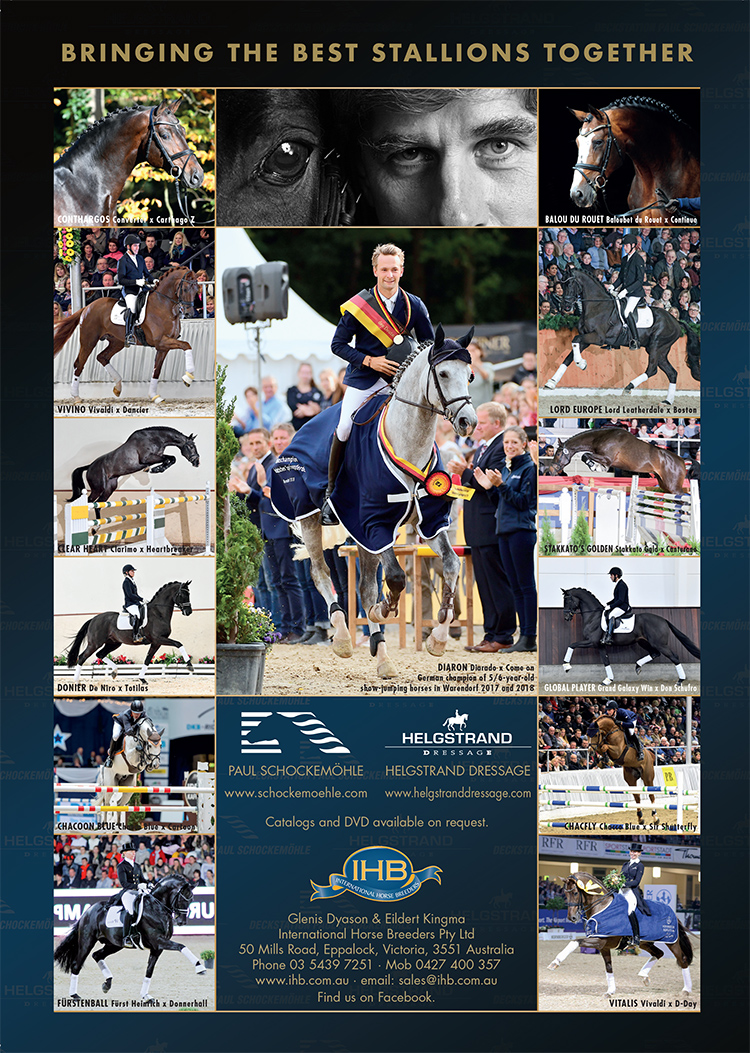
Jean-Baptiste Thiebot and the Haras de B’Néville
Now I had been warned by several people that the interview would be difficult, Jean-Baptiste does not talk, I was told. It must have been my lucky day, because he talked and talked, so much so that I had to hold up my hand to stop him, to let our minder, Elise Bourdin from UNIC, catch up with the translation.
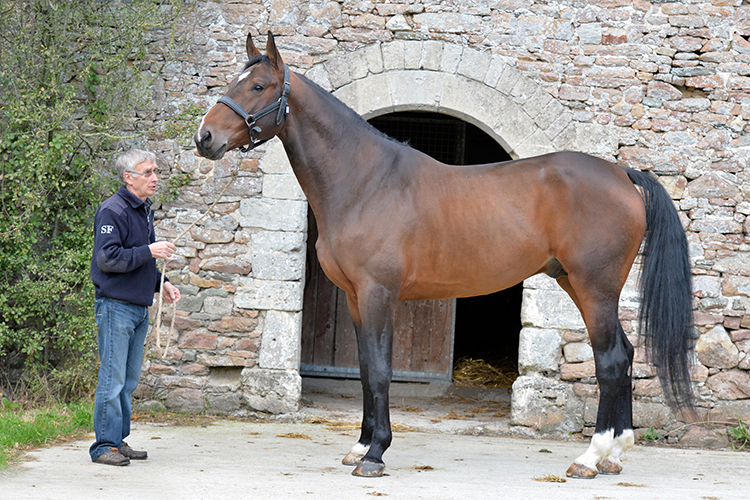
Jean-Baptiste and his young son of Kannan, Cristal de B’Néville
Jean-Baptiste’s farm is beautiful, wonderful old stables, a gracious mansion and a lovely garden, but you can see that inside the house is far less important than the exterior. Papers cover almost every available surface, and a microwave seems to have taken over the traditional French kitchen. His friend, Catherine Delpierre, who is helping take care of the visitors, remarks that ‘all Jean-Baptiste cares about is his foals, the rest of his life is not very important.’
It seems Jean-Baptiste was headed for the more conventional life of a lawyer, before horses took over: “I was studying law, and I came here for a holiday with my uncles, they had cows and six mares. Before the Selle Français studbook, it was the Anglo Norman studbook. Here in Normandy there were always a few places with Thoroughbred mares, and these mares were mixed with the Anglo-Normand. This breeding base came from Ireland and the United Kingdom.”
“After my law studies, I started to think about the future, and I decided to become a farmer and a horse breeder so I came back to this farm in Normandy. I started breeding some horses, and it grew, I had eight mares, so it started.” (article continues below)
The star Piaf de B’Néville – silver at Rio
You breed for showjumping rather than eventing because there is more money in showjumping…
“About thirty years ago, there were as many eventing competitions as there were showjumping, now it is very different. Then the great equestrian families of Normandy – Navet, Leredde and Pignolet – were eventing. Then the direction went to showjumping because you can make a lot of money in showjumping.”
Mares and foals, left to right: Lady de B’Néville (Cellebrio/Eve de B’Néville/Qredo de Paulstra); Graine de B’Néville (Urquino du Hamel by Quinoto Bois Margot/Lady de B’Néville); Sonate de B’Néville (Qredo de Paulstra/Ecume by Rosire); Genial de B’Néville (Kapitol d’Argonne by Apache d’Adriers/Nuance de B’Néville); Galaxie de B’Néville (Othello du Phare by Kannan/Sonate de B’Néville); Nuance de B’Néville (Talent Platiere/Vigie de B’Néville by Dear Patrick); Gloire de B’Néville, (Giovani de la Pomme by Shindler de Muze/Onde de B’Néville); Onde de B’Néville (Talent Platiere and Eve de B’Eeville by Qredo de Paulstra); Gandhi de B’Néville (Othello du Phare by Kannan/Oceane de B’Néville); Oceane de B’Néville (Quiniou/Griffe de B’Néville by Rosire)
Will this change after the success of the French eventers at Rio?
“All the money goes to the bigger showjumping competitions, but I do have two young horses in my stables that I think would be very good for eventing, so I hope that after Rio the market will go up for eventers. Eventing is a wonderful competition – dressage, cross country, showjumping – I would like to continue to sell horses foreventing, but the reality is sometimes difficult, and I will sell horses for showjumping because I need to live.”
What have been the most important stallions that you have used?
“Recently it has been Kannan. He produces foals at every level, for amateur riders and top level riders. I have twenty five mares and I use about twenty different stallions.”
Our super minder from UNIC, Elise Bourdin makes friends with Genial de B’Néville
Do you use some of the younger stallions, or only the established stallions?
“I use some younger ones. A lot of breeders in France are using Kannan and Diamant de Sémilly, but I am also using sons of those two. The foals of Diamant are either top level, or nothing, so breeding with him is a risk. When I choose stallions, I prefer to choose stallions that are ridden by girls, or by rich amateurs. The amateur riders have the best horses because they are not such good riders – when the horse is ridden by Ludger Beerbaum or Kevin Staut, you can’t be sure how good it is.”
“I have used the stallion, Kapitol d’Argonne (Apache d’Adriers / Galoubet) who was ridden by the Italian, Emilio Bicocchi, this was a very good horse because he wasn’t ridden by the best rider in the world.”
Kapitol d’Argonne – Jean-Baptiste likes horses ridden by not so good riders
You like to keep ‘blood’ in your breeding program – is that hard because people don’t want to buy the foals of Thoroughbreds?
“It’s complicated, it is hard to get good blood, there’s no point in blood if it is bad blood, the foals need to be good in the head. My mares have blood. For example, with Piaf, one journalist said it was amazing that he looked like a horse with a lot of blood, when his pedigree didn’t look like that, but there is blood in the fourth generation.”
(Actually Piaf de B’Neville is over half – 57.42% – blood. He is by Cap de B’Neville a grandson of the great Rantzau xx, out of a mare by the Jalisco son, Reve d’Elle. Once you go behind that fourth generation you find all the great Thoroughbreds that influenced the French horse: Rantzau – who is the only one who appears in the fourth line, Ultimate (x 3), Furioso, Le Sancy, Fra Diavolo, Phalaris, l’Alcazar and seven crosses of Orange Peel.)
“I have a mare by Quick Star, which has a lot of blood and I bred this mare to Lam de Fétan (Ferger Mail / Le Tot de Sémilly) who is quite heavy with not a lot of blood, but the foal is a blood type.”
Right from the start was Piaf something special?
“Certainly not. At the beginning he was nothing special. He was not very tall because he was the first foal of that mare. Finally when he was three years old, you could see he had very good movement. When he was three I presented him to some buyers, but they didn’t like him because he was too young and too green. But then the coach of Astier Nicolas saw Piaf and another horse, but they bought the other one and they were training him for the Young Horse Championships at Pompadour for eventing.”
“But six weeks before the Championships the horse was injured and the coach, rang me and said, Mr Thiebot, it is a catastrophe, she remembered Piaf and asked if I could sell the horse so the rider had something to take to the Championships. The rider started to work with Piaf and Madame Perrier liked him a lot, but a few months later the rider stopped riding, and her father rang me to say he didn’t want the horse any more, and Piaf came back here.”
“Then Astier’s mother rang to say that Astier had seen the horse and liked him, but then he was owned by his friend and he didn’t want to interfere. So she came with Astier and after a trial, Astier bought him with the help of a friend. It is another example of the extraordinary stories of horses, if Piaf had stayed with the first rider, no one would have ever heard of him.”
“Another example of this is Nino de Buissonnets with Steve Guerdat. The horse was sold for nothing because the owner didn’t want him. The same with Ideal du Thot, he was owned by a couple near here, they didn’t see the horse was good, and he won a World Cup final with Beat Mandli. Sometimes I have to sell my horses to riders who are not very good because I cannot keep them, but I cannot choose, so sometimes the future of the horse is not what I hoped.”
What is the passion? What makes you a horse breeder?
“Sometimes it is better to live with horses than with humans. My passion is breeding horses and I want to share this passion with other breeders. I don’t know if it is the same in the other parts of the world, but in France the Selle Français studbook has registered 50% less foals than they did in the past, but I hope the level will stay there and not get any lower.”
“I take a lot of care of how the horses grow up, their feeding and the fields is very important for the well-being of the horses. Everything is based on a four-year preparation for the horses to be ready to event and showjump. I produce about 80% of the food for my horses, using different grains, and every day, they get supplements and minerals. When people come here to buy a horse, and they take x-rays, they find nothing bad because of the way they are raised.”
Jean-Baptiste shows off one of his broodmares – Oceane de B’Néville
“The problem is that we can keep the stallion semen, but when the mares die, then they are lost. In Italy they are trying to produce foals in laboratories, with no parents anywhere, and with just one mare, they can get over 20 eggs. For eventing our horses have to have so many different characteristics, I guess that the foals born in labs won’t have these qualities and won’t be able to compete in eventing.”
It was time to say goodbye to Jean-Baptiste, his passion, and his horses, we were due at Lion d’Angers, the young eventing horse championships beckoned…

